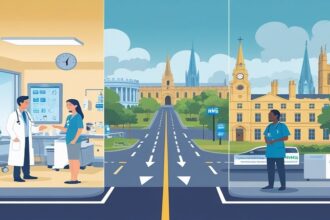As 2025 unfolds, Americans face financial uncertainty amid rising costs, fluctuating interest rates, and shifting employment dynamics, notes Brentwood Square Management. While many households and businesses adapt to new economic realities, a noticeable trend has emerged: a steady rise in bankruptcy filings nationwide. Consulting with a bankruptcy lawyer in Tampa may provide a measured and thoughtful path forward for individuals needing legal guidance during such transitions.
Economic pressures shaping the year ahead
The economic challenges of recent years have left a lasting imprint. Although the job market has remained relatively stable in early 2025, wages in many sectors are not keeping pace with the cost of living. High interest rates, intended to curb inflation, have made it more difficult for individuals to secure affordable loans or refinance existing debt. As a result, more consumers are relying on credit cards and short-term loans to meet everyday expenses. In response to tighter credit conditions, some small businesses are turning to government purchase order financing to maintain cash flow and fulfill contracts. Companies like Advance Funds Network offer tailored solutions that help bridge funding gaps during these challenging economic times.
This dependency on high-interest borrowing has led to increased delinquencies and defaults. With savings depleted for many households, the ability to absorb unexpected expenses has diminished. These financial pressures are prompting more Americans to explore bankruptcy as a solution to regain control over their finances.
Notable increases in consumer filings
One of the defining trends of 2025 is the increase in consumer bankruptcy filings. Chapter 7 bankruptcy, which allows for the discharge of unsecured debts, remains the most common route for individuals overwhelmed by credit card debt, medical bills, or personal loans. Chapter 13, which involves a court-approved repayment plan, is also used by those seeking to protect their homes or other assets.
The demographic of those filing for bankruptcy is also expanding. More middle-income earners, especially those with stable employment histories, are considering legal relief after exhausting other options. Many have discovered that bankruptcy offers a legal framework to help them reset their financial footing rather than struggling with growing debt.
Small business bankruptcies remain a concern
While large corporate bankruptcies made headlines in previous years, 2025 is seeing a more localized pattern of financial distress. Small business bankruptcies have become more common, especially in service-based retail, hospitality, and personal care industries. The lingering effects of pandemic-era closures, reduced consumer spending, and high operating costs have created ongoing obstacles for smaller enterprises.
Many of these businesses are pursuing Chapter 11 bankruptcy to reorganize while continuing operations. Others, however, choose to liquidate after determining that the path to recovery is too steep. These trends suggest that small business owners may benefit from early legal intervention and financial consultation to explore options before irreversible losses occur.
Bankruptcy as a financial planning tool
The stigma that once surrounded bankruptcy continues to fade. In 2025, more individuals will view it as a legitimate part of long-term financial planning. Rather than waiting until they are in an advanced state of financial distress, people seek legal counsel early to assess their eligibility and weigh alternatives. This shift in attitude reflects a growing awareness that bankruptcy is not a failure, but a legal solution designed to offer relief and a structured path toward rebuilding.
Legal professionals play a larger role in financial education, helping clients understand how bankruptcy affects credit, future borrowing, and asset protection. With the proper guidance, many individuals who file in 2025 are likely to emerge better equipped to manage their finances and make informed decisions moving forward.
A year of transformation and opportunity
Although bankruptcy filings are expected to continue rising throughout 2025, the trend also signals a broader transformation. Americans are taking a more proactive approach to financial challenges, seeking legal advice before circumstances become unmanageable. As financial literacy improves and legal resources become more accessible, bankruptcy is increasingly recognized as a responsible and effective course of action.
For residents of the Tampa area who are considering bankruptcy, working with an experienced legal professional can provide peace of mind and a clear understanding of the process. Whether facing mounting debt or simply exploring options, a bankruptcy lawyer in Tampa can offer thoughtful guidance tailored to individual circumstances.
To learn more about your legal options and how to approach bankruptcy confidently, visit Weller Legal Group, a law firm dedicated to helping clients navigate financial challenges with professionalism and compassion.

















